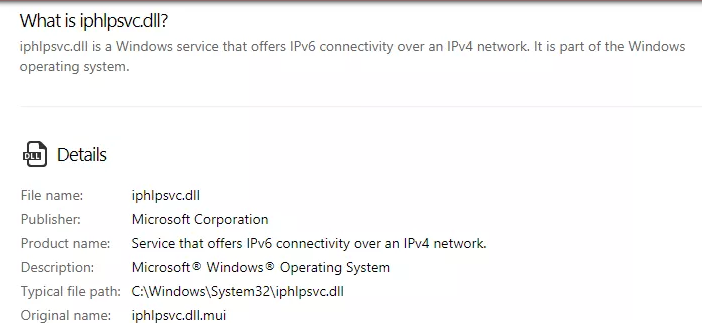NEWS
10 Tips to Get Discovered on Instagram Reels

gumroad ceo patreon the business… Looking to skyrocket your success on social media, you must consider Instagram reels as they are trending on the platform. Not only individuals but brands are also trying this feature to boost followers and engagement rates. Several companies have improved their sales rate just by exploring new ways to achieve success for their marketing needs. If you are making efforts continuously and still not achieving the results of your demand it’s time to revolutionize your strategy. Keep on reading, this article is for you.
Here are 10 tips to get discovered on Instagram reels and make your way to the top:
Utilize hashtags:
Using relevant hashtags in your reel’s captions can help increase their visibility on Instagram. When users search for a specific hashtag, they’ll be able to see all the reels that have used that hashtag, and if your reel is relevant and engaging, it can attract new followers and drive more engagement to your account.
However, it’s a good choice to buy Instagram auto likes for quick growth and use hashtags strategically, and not just include a large number of irrelevant hashtags in your captions. This can make your reels appear spammy and decrease their visibility. It’s best to use a mix of both popular and niche-specific hashtags that are relevant to your content and target audience.
Collaborate with others:
Collaborating with other creators can help increase visibility and reach a new audience. You can create a reel together, either by filming a duet video or by showcasing each other’s content in a split-screen format. Share each other’s reels on your respective accounts, increasing visibility for both of you. This can also help build a relationship between the two of you and potentially lead to future collaborations. Tag other creators in your reels and ask them to share it with their followers can also help increase visibility. This creates a chain of cross-promotion and can bring in new followers to both of your accounts.
Participate in trends:
Creating reels that align with current trends and popular topics is a great way to increase visibility and reach a wider audience. This can help you tap into the conversations that people are already having and attract users who are interested in those topics. Keep an eye on the news and social media to see what topics are trending and relevant to your audience. Participate in discussions around popular topics by creating reels that offer your unique perspective or add value to the conversation. Make sure to include relevant hashtags in your reel captions to make them more discoverable to users who are searching for content related to those topics. By creating reels that align with current trends and popular topics, you can increase your visibility and reach a wider audience, ultimately helping you grow your Instagram following.
Optimize your account:
Choose a clear, high-quality profile picture that represents you or your brand. This will help make your profile more recognizable and memorable. Write a bio that accurately represents you or your brand and includes important information such as your niche, location, or contact information. Make sure it’s concise and engaging. Use Instagram highlights to showcase your best content and make it easily accessible to your followers. Organize your highlights into relevant categories and consider adding descriptions to give context to each highlight.
Post consistently:
Regularly posting reels demonstrates your commitment to your account and your followers. It also helps establish your brand and makes it easier for followers to remember you. Reels are designed to be short, fun, and engaging, making them a great way to keep your followers entertained and engaged with your content. Instagram’s algorithm prioritizes accounts that are consistently active and engaged, so it’s better to invest money and buy Instagram auto views to increase visibility.
By regularly posting reels, you can increase your visibility on the platform and potentially reach a wider audience. Reels can be seen by users who don’t follow you, increasing your exposure and the potential for new followers.
Use music:
Choose popular songs that are relevant to your reel’s theme or mood. This can help make your reel more relatable and increase the likelihood that people will engage with it. You can also create your original music or use royalty-free music to make your reels unique. This can help you stand out from other creators and make your reels more memorable. Make sure to only use music that you have the rights to use, either through a music licensing service or by creating your original music. Using copyrighted music without permission can result in your Reel being removed or your account being penalized.
Share Reels on other platforms:
Different social media platforms have different audiences, so consider where your target audience is most active. For example, TikTok is known for having a younger demographic, while Twitter is popular among a wider age range. Make sure to adapt your reels to the platform you’re sharing them on. This can mean adjusting the length, aspect ratio, or content to better fit the platform’s format. Engage with your followers on the platforms you share your reels on to build relationships and increase engagement.
Engage with your followers:
Responding to comments and messages promptly shows your followers that you value their engagement and are committed to building a relationship with them. Personalize your responses to comments and messages to make them feel more genuine. This can help you build a stronger connection with your followers and make them more likely to engage with your content in the future. This can help you build a reputation as a knowledgeable and helpful creator, increasing the likelihood that people will follow you and engage with your content.
Create educational or entertaining content:
Share information or insights that your followers may not know or find helpful. This can include tips, tutorials, or educational content related to your niche. Create content that is fun, light-hearted, or entertaining. This can include humor, memes, or other types of content that your followers can enjoy. Offer solutions to problems your followers may be facing. This can include tips and advice, or resources they can use to solve a problem they may be facing. Share content that inspires your followers and motivates them to achieve their goals. This can include motivational quotes, success stories, or other types of content that inspire.
Promote your Reels:
Paid promotions can be a valuable tool for increasing visibility and reaching a larger audience on Instagram. Make sure your paid promotions are targeted to your ideal audience. You can do this by using targeting options such as age, gender, location, interests, and more. Try to add eye-catching visuals, such as images or videos, to grab the attention of your target audience. There are several different types of paid promotions on Instagram, including sponsored posts, sponsored stories, and IGTV ads. Choose the right format for your message and audience.
NEWS
woodgrain my tools

Are you looking for information on woodgrain my tools? You have come to the right place! In this blog post, we will provide a step-by-step guide on woodgrain my tools
Woodgrain Login
Power Tools – Woodgrain
www.mytoolswoodgrain.com/
Mytools Woodgrain Login – MetaBenefit
woodgrain mytools – WOW.com – Content Results
Mytools woodgrain
Woodgrain Tool – Available At Blue Star Antiques
Mytools woodgrain com
Mytools woodgrain millwork
Mytools Woodgrain
Mytools woodgrain
Woodgrain Tool – Available At Blue Star Antiques
How To Use A Wood Grain Tool: It’s So Easy – Chas’ Crazy Creations
Wood Grain Rocker Tool – Heirloom Traditions Paint
Wood Grain Tool, 5Pcs Wood Grain Roller Soft Rubber Wood …
NEWS
Rajkotupdates.News : Work Permits for Indian Spouses of H-1B Visa Holders Approved by the U.S.!

Indian H-1B visa holders’ spouses, take note! Newly released information is exciting: the United States has issued work permits to eligible individuals, allowing them to pursue their professional goals and contribute to the economy.This is a monumental shift that has the potential to profoundly affect the lives of tens of thousands of people across the country. Prepare yourself for the most recent rajkotupdates.news report!
What Exactly Are Work Permits?
- Spouses of U.S. citizens from outside the U.S. who are sponsored by their sponsors and who meet other criteria can apply for work visas.
- Spouses from outside the United States can get work permits to lawfully work in America. Furthermore, they are permitted to remain for longer than visitors who are not immigrants.
- US Citizenship and Immigration Services (USCIS) documentation and an interview may be required to secure a work visa, but the process is otherwise simple.
- After you obtain your work permit, you must provide it when you apply for a visa or request entry to the United States.
To Whom Do Work Permits Apply?
If your spouse is in the United States on an H-1B visa and you are an Indian citizen, you may be eligible for a work permit.
The following conditions must be met before you can apply:
- You and your American spouse must be more than just dating.
- Your U.S. companion must hold a current H-1B visa.
- You can’t get married if you cheated or lied about anything.
- You and your future spouse in the United States must have met beforehand.
- You need to prove that no American citizen or permanent resident is qualified for the position you’re applying for.
Your fourth step is to visit the U.S. Department of State’s Bureau of Citizenship and Immigration Services (BCIS) to apply for a work visa. Be sure to include all of the required paperwork with your application because the review process can take many months.
What Do You Need to Do to Get a Work Permit?
If you are Indian and married to a U.S. citizen, you might be eligible for a work visa.
- You must be financially stable in order to qualify for an H-1B visa.
- Have a representative of your own country’s government witness your wedding.
- Carry a valid passport. If you meet all of these requirements, then you can submit your application to USCIS. Your partner’s full name and U.S. address are required pieces of information.
- You’ll also need to present documentation that you have the means to support yourself financially and that you’re legally able to receive a work visa, such as a marriage licence. You may be eligible to file an appeal if you are denied a work visa.
How Do You Apply for a Work Visa?
The process of obtaining a work visa varies from country to country. In most cases, you’ll need to demonstrate that you’re capable of supporting yourself and your partner.
It’s possible that you’ll also need to provide evidence of your relationship status and health insurance coverage. In some countries, you need a visa before you can apply for a work permit.
After obtaining a work visa, what steps should one take?
- Submit an application for a change of status with the Department of Homeland Security (DHS) after obtaining a work permit.
- To begin the Adjustment of Status procedure, you must provide evidence of your marriage and establish that you otherwise qualify.
- If your status adjustment is approved, your spouse will be entitled to apply for an immigrant visa and join you in the United States.
Conclusion
Spouses of Indian citizens holding H-1B visas are now eligible to apply for work authorization in the United States. More qualified Indian workers may find employment in the United States as a result of this. The work permits would be valid for up to six years, allowing Indian nationals to compete for jobs that would normally be out of reach due to a lack of education, training, or experience. This is part of President Trump’s strategy to reduce the need for foreign labour and halt the influx of illegal immigration.
NEWS
After the developer of Amphetamine complained to Apple about the software being removed because of its name, the company ultimately decided to allow the Mac app have its present name and logo (William C. Gustafson / GitHub)

Amphetamine is a free application for the Mac that allows the user to configure how long the computer will remain awake. The 2014 release has been well received by users, with over 432,000 downloads and five-star ratings on the Mac App Store. MacRumors has previously highlighted the app as well. Amphetamine has been available on the Mac App Store for six years before Apple unexpectedly removed it for not following their rules.
After a representative from Apple contacted Amphetamine’s developer, William Gustafson, to inform him that the software will be withdrawn from the Mac App Store on January 12, 2021 if several adjustments were not made, Gustafson posted a lengthy report on GitHub describing the situation. The agent stated that the following condition was not met by Amphetamine:
Tobacco and e-cigarette, illegal drug, and excessive alcohol consumption-promoting apps are not allowed in the App Store. Any app that targets kids or encourages them to use illegal drugs or alcohol will be removed. Tobacco, marijuana, and other controlled substances cannot be sold, and neither can they be facilitated for sale outside of legal pharmacies. According to reports, the Apple official stated “It seems like your software encourages people to take drugs in the wrong way. In particular, your app’s name and image both make allusions to illegal drugs and medicines.” As amphetamine is available only with a doctor’s prescription in the United States, Gustafson said, it doesn’t encourage drug abuse. He added that the film does not advocate for the “irresponsible, illegal, or recreational” use of amphetamine.
Amphetamine (the app) can be used in the same way as amphetamine (the chemical molecule) can be used to keep humans awake and focused.
To counter the claim against the app, Gustafson filed an appeal and started a petition on Change.org, which has since received over 500 signatories. And just now, he tweeted that he had just gotten off the phone with the App Review Board and that Amphetamine would still be available in the Mac App Store. It’s surprising that Apple forced Amphetamine to change its name after they highlighted it in a Mac App Store Story and the software received 1,400 reviews on the Mac App Store. Gustafson also claims to have had numerous conversations with Apple’s App Review Team on Amphetamine, but this issue has never come up before; the cause of this is a mystery.
-

 Marketing1 year ago
Marketing1 year agoHow Often Should You Publish on a Blog?
-

 Technology1 year ago
Technology1 year agoIPHLPSVC Services Tuning? Windows 7/10
-

 Technology1 year ago
Technology1 year agoHow AI Can Transform Healthcare
-

 REVIEWS1 year ago
REVIEWS1 year agoBest Gaming Communities Like F95zone
-

 OUTDOOR1 year ago
OUTDOOR1 year agoColoring Black and White Photo at Home
-

 Technology1 year ago
Technology1 year ago5 Best React JS UI Frameworks for Swift Prototyping
-

 REVIEWS1 year ago
REVIEWS1 year agoAll You Need to Know About KissAnime – Is it Safe and Legal?
-

 GAMING1 year ago
GAMING1 year agoPick N Mix: A Slots Adventure for Everyone
